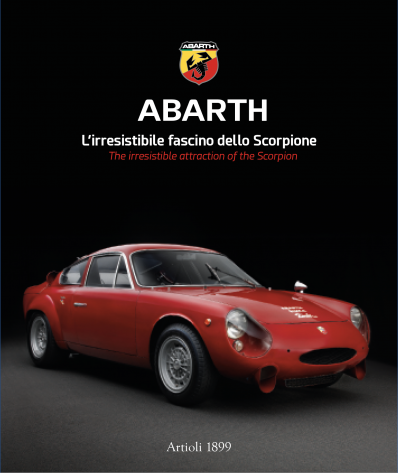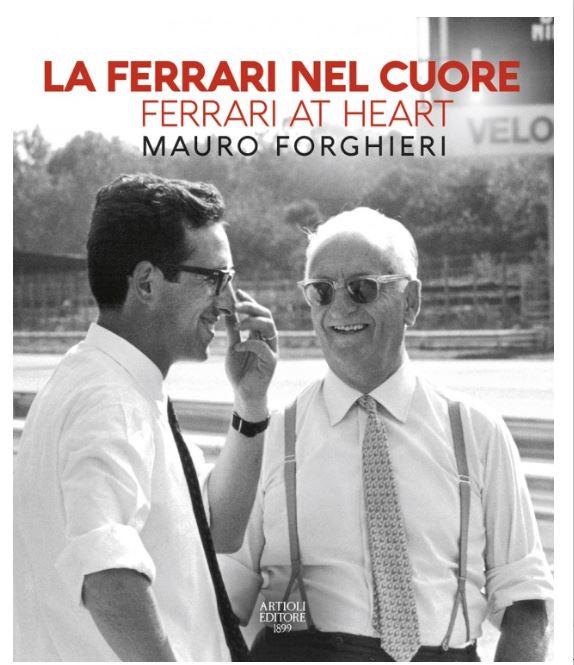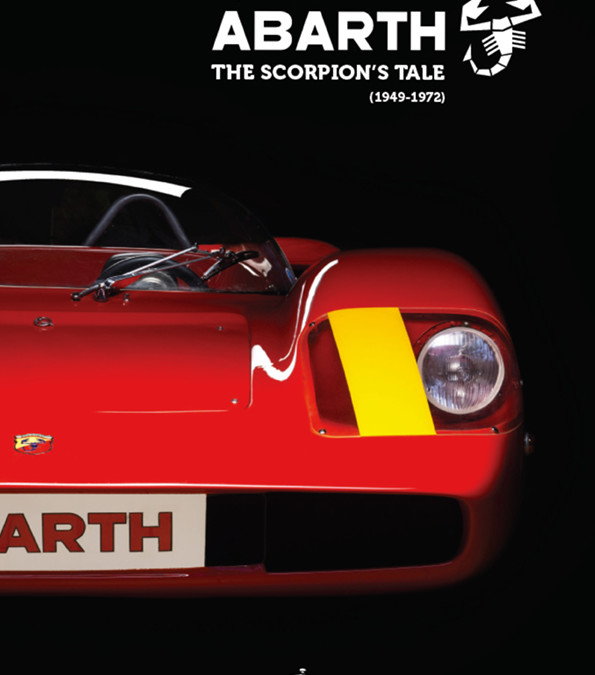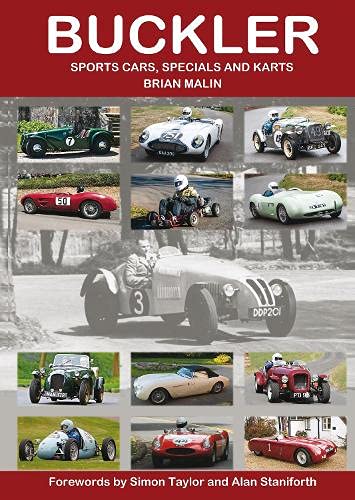
Although they were born 18 years apart, Derek Buckler and Colin Chapman were contemporaries when it came to designing and building ground-breaking sports cars in the late 1940s and early ’50s. They had much in common. Both were innovators, especially in areas of chassis design and improving the handling characteristics of their cars. Both founded successful companies and both died relatively young, Chapman in December, 1982, at the age of 54, and Buckler in 1964 at just 53 years of age. Yet, while Chapman’s Lotus went on to achieve worldwide fame, the name Buckler remains comparatively little known.
Special building was popular in the 1950s, mostly using ‘donor’ chassis from Austin 7 or Ford or simple ‘ladder’ frames but Buckler offered a multi-tubular space frame which was both stronger and lighter and, moreover, available in different models to suit different applications. He was also always ready to adapt his products to his customers’ requirements. In all of this, Buckler’s aim was to provide the impecunious enthusiast with a versatile sporting vehicle which could be used as daily transport during the week and, at weekends, in a wide range of motor sporting events from trials and driving tests to out and out racing. Often, however, the resulting Special would carry a name that concealed the Buckler contribution and a major part of the significance of Malin’s book and the vast amount of painstaking research put into it by its author is that much of that contribution is now revealed.
Buckler also, of course, made a range of complete cars starting with the versatile Mk5 and 6 and going on to encompass DD1 and DD2 with De Dion rear ends and the BB100 with backbone chassis introduced considerably before Lotus’s Elan and their other similarly based models. When karting became popular in the early 1960s, Buckler’s space frame technology found another application for which it was ideal and it became a major player in this burgeoning branch of motor sport. Buckler was also successful with its range of accessories including engine and transmission components and most notably its much admired close-ratio gears.
Brian Malin, the author, first owned a Buckler car in the 1970s and today competes in his Mk 5 in hill climbs and other events. He is an active member of the Buckler Register as well as the British Historic Kart Club and is often to be seen racing or demonstrating his Buckler kart so he is well placed to compile this comprehensive history of all things Buckler. It was first made available in loose-leaf form as long ago as 1990 but this is its first publication as a fully-fledged book, revised, updated and with additional material. Chassis design guru – and Buckler owner – the late Alan Staniforth provided the original foreword and this has been updated and included along with a new foreword by commentator and doyen of motor sport journalists, Simon Taylor.
The fourteen chapters begin with ‘Buckler and the Company’, cover the production and racing cars with some individual histories, the Buckler accessories including one chapter on the badges alone, overseas distribution – New Zealand was a particularly strong market for Buckler – and a fascinating section on the car advertisements before going on to cover the kart story in similar detail. The same number of appendices include reproductions of road tests, articles written by Derek Buckler, specifications of close-ratio gears and Buckler-tuned Ford engines, kart track tests and even one on Buckler letterheads. Malin’s work is truly encyclopaedic and therefore remarkable value for money not just as a reference on the Buckler marque but for its entertaining insight into the world of amateur motor sport of its time. The hundreds of illustrations range from reproductions of high quality contemporary and recent photographs to some admittedly lower quality originals, some of them obviously retouched to improve clarity, whose inclusion is well justified for their essential contribution to the Buckler story.
Brian Malin is to be congratulated for his perseverance in finally bringing to publication a book which is, to all intents and purposes, the full Buckler story.
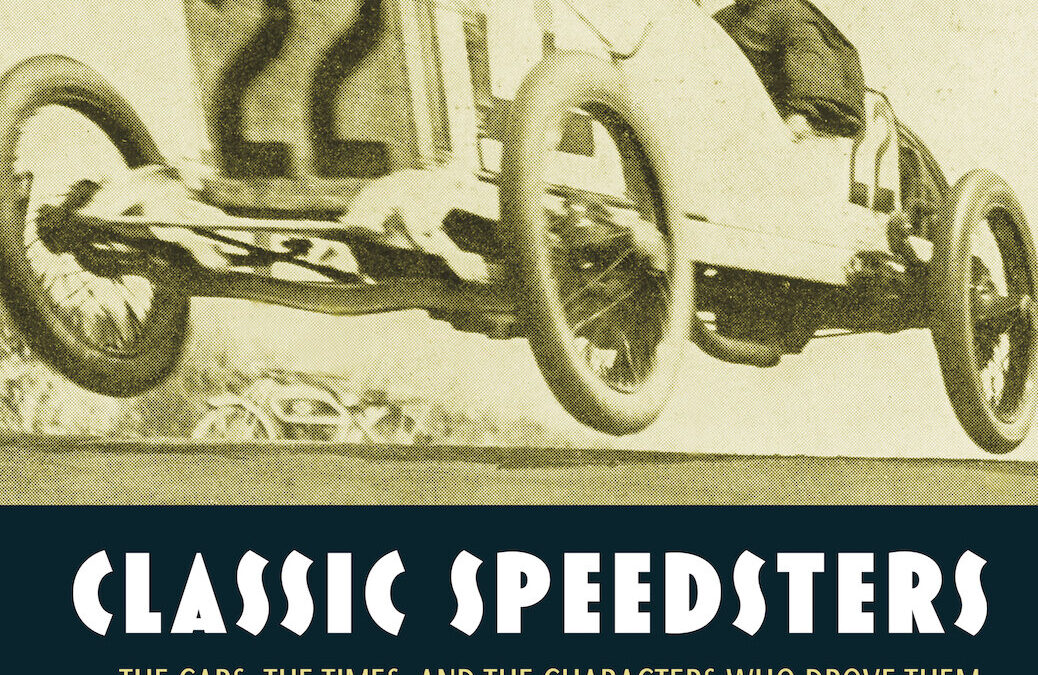
12 Chapters, 12 Car Companies, 12 Famous Owners And a collection of speedsters that will inform and entertain!
Have you ever wondered when and how the hotrod movement started? Or speed and endurance events? Landspeed racing? Hillclimbing? Or anything involving power, speed, or just having some fun in an automobile? This book—Classic Speedsters—covers all of that, and much more.
Classic Speedsters: The Cars, The Times, and The Characters Who Drove Them chronicles the most significant vehicles ever to have traveled American roads and racetracks. Speedsters were the pizzazz cars of their era. Speedsters were owned by entertainers, captains of industry, the wealthy, and in some cases, the everyday guy or gal. They were often expensive, but they were always fast and sexy. Speedsters were America’s first sports cars.
Each chapter frames the birth and evolution of a company that produced a speedster model in its lineup and includes a biography of a famous owner of the period. This book traces the journey of the speedster concept across several time periods, from 1894 to 1970. It examines the speedster’s story among 12 automotive companies, 11 of which were American.
This is the first automotive book to study the speedster concept in depth. A broad swath of speedsters from 12 different manufacturers (actually—there are 13 companies in the book) are examined in order to distill the essence of this singular model.
The companies and the speedsters that they produced are framed within the context of their time to better understand how technology and market forces shaped the success and failure of these companies (and their cars). The people who were drawn to and purchased these vehicles—why did they? This too is examined and discussed.
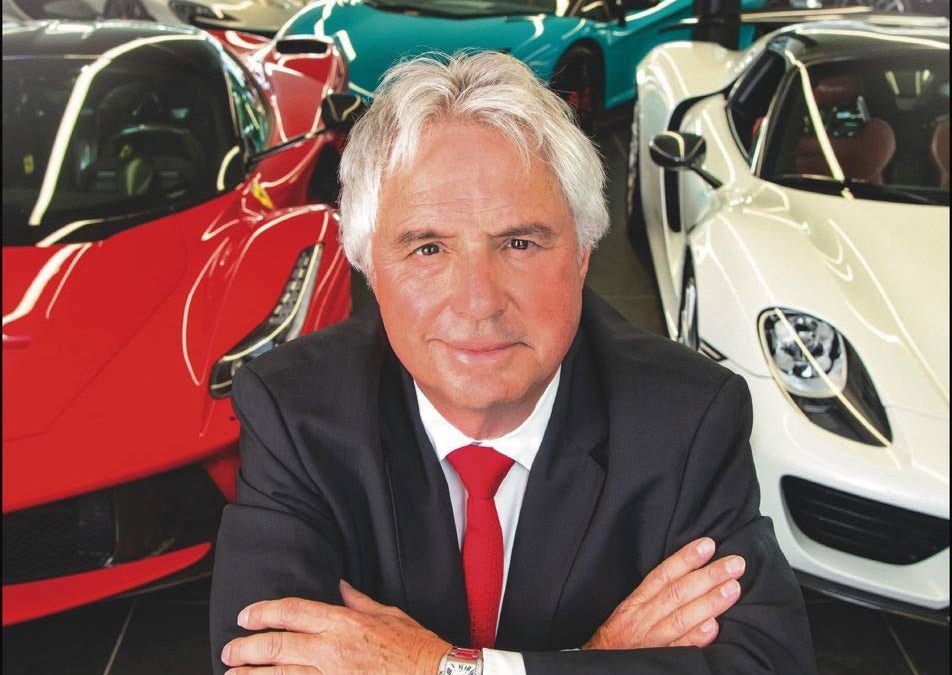
The car world is full of fascinating characters, but few have a story to tell quite as remarkable and inspirational as Tom Hartley.
Walking out of school at the age of 11, unable to read or write, Hartley set up his own business buying and selling cars. From that moment, he defied logic and ripped up the rule book on his way to the top. Today he runs one of the most successful independent family run performance and luxury car businesses in the world. He has built up an unrivaled reputation as “The Dealmaker.”
Tom has been at the top for over 40 years, survived and thrived through four recessions, and overcome three life threatening illnesses. In his own brutally honest words, Hartley tells his gripping story of a boy from a traditional Romany family who swapped the classroom for the cut-throat world of Glasgow’s car auctions, buying and selling his first car at the age of 12. Having decided to drive himself around illegally, he was only 15 when he had his first car crash, and they don’t come more spectacular than writing off a Ferrari Dino – nothing has ever been normal in the world of Tom Hartley!
Hartley had made his first million by the age of 17, but soon suffered major setbacks as his business went bust, and he found himself at risk of losing his sight without major surgery. Hartley started all over again, living in a mobile home with his wife and working from the back of a car. He had gone from hero to zero, but his burning desire to be the best saw him climb his way back to the top. His ability to clinch deals in some of the most bizarre places has become legendary, like buying a car in a sauna, while stuck in a traffic jam on a motorway, and even in a swimming pool!
Family has played a key part in the Tom Hartley story, his wife has been at his side all the way, and his two sons have followed closely in their father’s footsteps. Indeed Tom’s belief in family is one of the inspiring messages that comes through.
Hartley’s inspirational story is about the unshakeable belief in his own abilities, from a precocious schoolboy who had a dream, and then through sheer hard work and a burning desire to make the dream come true. This is not just a book for car enthusiasts but for anyone who has dared to dream. It’s a story that will inspire and motivate, and proves you can make the wildest dream come true if you want it badly enough.
Tom’s remarkable story is written with the collaboration of journalist Ken Gibson, for 24 years, award-winning Motoring Editor of The Sun newspaper.

Aircraft nose art has long been a military institution. First appearing in the form of a sea monster on the front of an Italian flying boat in 1913, through WWII, Vietnam, and on to today, Nose Art catalogs and presents it all.
Hundreds of detailed illustrations through the decades give the full picture of the evolution and history of these mini-murals. From early shark and tiger mouths below front propellers, to historical logos and Loony Toons characters, to the modern banning of nude pinups, author Tony Holmes explores this incredible subject in detail.
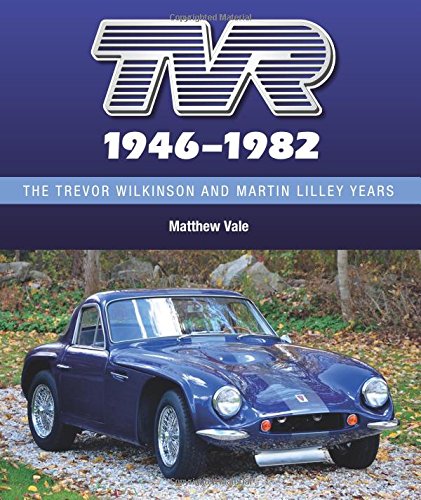
TVR 1946-1982 – The Trevor Wilkinson and Martin Lilley Years describes the complete story of the early days of TVR from Trevor Wilkinson establishing the company in 1946 through to the Martin Lilley years, which came to an end in 1982. The design and development of these classic British sports cars, with their defining characteristics of tubular backbone chassis and glass fibre bodywork, are described in detail. Illustrated with over 200 colour and black and white photographs the book covers all the early years, including the Sports Saloon, the Jomar, the Open Sports, TVR’s first true production car the Grantura from 1958, Griffith models with their remarkable 289 cu in Ford V8 motors, the Vixen and Tuscan range of the late 1960s, the M Series models launched in 1972 and finally, the Tasmin range introduced in 1980.
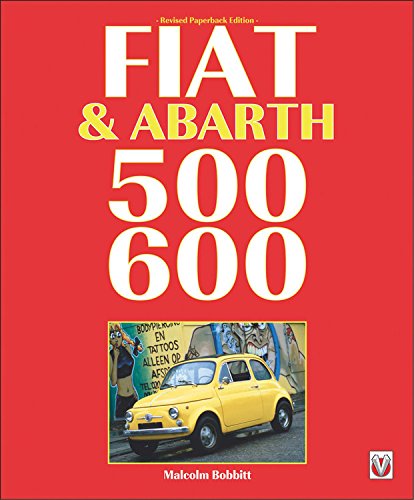
Everyone’s favorite Fiats in detail!
Always big on character and charm, Fiat’s little cars played an important international roll in providing affordable and practical private transport for millions who had previously thought their dream impossible.
With particular emphasis on the now classic 600 and Nuova 500 cars, this book tells the full story of these ‘baby’ Fiats. Built, and exported to, many countries outside of the marque’s native Italy, over 6.5 million Topolinos, 600s and Nuova 500s were sold, and an amazing number survive to this today. Also covered are the wonderful models built on these cars’ tiny chassis by Italy’s leading coachbuilders, and the motorsport success achieved by the Abarth versions of the little cars that everybody loves.
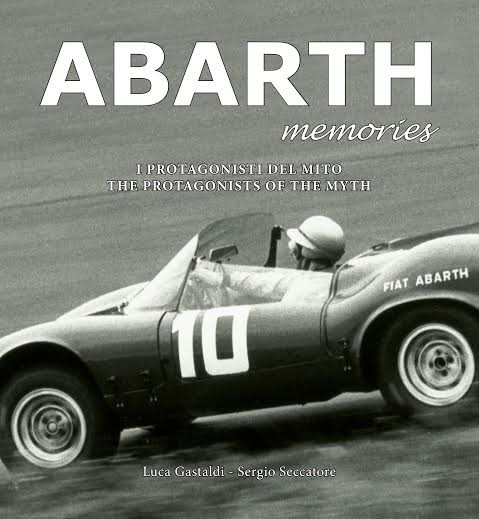
Abarth Memories is a new book dedicated to the famous Scorpion trademark.
What you will read in the 240 pages of Abarth Memories is the story of a great company told directly by the protagonists. You will find the portrait of Carlo Abarth – of the man, the businessman, the versatile character that he was – painted by those who worked side by side with him. You will find the stories told by his employees, collaborators, and drivers: men and women who lived the Abarth myth personally. In fact, they did even more than that: they contributed in a significant way to the development of what will always be known as the speed factory.
So, the book is a fascinating trip down memory lane, with the stories of personal experiences intertwined with previously unpublished photographs. The protagonists are subdivided according to their roles in the company: the technicians, drivers, test-drivers, mechanics, test-room workers, clerks. There are also people who worked in the exhaust department and the Autoboutique. At the beginning of the book, there are the recollections – defined as “retrospective” – of Lorenzo Avidano (Carlo Abarth’s right-hand man for more than twenty years) and, the Austrian genius’ third wife, Anneliese Abarth.

Few people have been as deeply involved in motorcycle sport as Chris Carter, a larger than life character and raconteur who was for a great number of years a journalist, commentator and broadcaster at the very top level of motorcycle sport. This memoir is a funny, fascinating and unique insider view of professional motorcycling over more than six decades. From scrambling in the 1960s, to four decades of international road racing – including Daytona and Macau – and on to trials and speedway. Packed with remarkable stories and amusing anecdotes, as well as interesting reflections and astute observations, it is a light-hearted, highly readable autobiography which lifts the lid on an extraordinary world. In past times, racing paddocks were open and friendly, and Chris felt part of a big, happy family. He lived cheek by jowl with the very top riders and shared their triumphs and tragedies; to many, he was a friend and confidante. Honest, frank and direct, Chris tells things exactly as they were, and provides insights into a fast disappearing world.
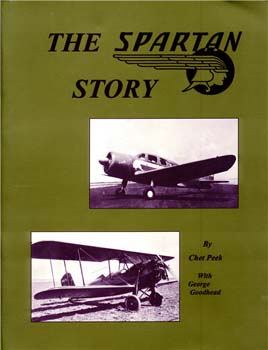
Chronicles humble beginnings of the Spartan Company in the “Roaring Twenties,” and its travails during the Great Depression and its growth and prosperity during and after World War II. Every Spartan aircraft model is detailed. Includes 3-view drawings. The fabled “Spartan Executive,” Spartan warplanes, the Zeus attack plane, Navy NP-1 trainer also covered. The Spartan School, which trained thousands of pilots and mechanics for the Army Air Force in WWII, is completely described and reviewed. Includes personal stories from several Spartan graduates. Activities of main characters Bill Skelly and J. Paul Getty are revealed.
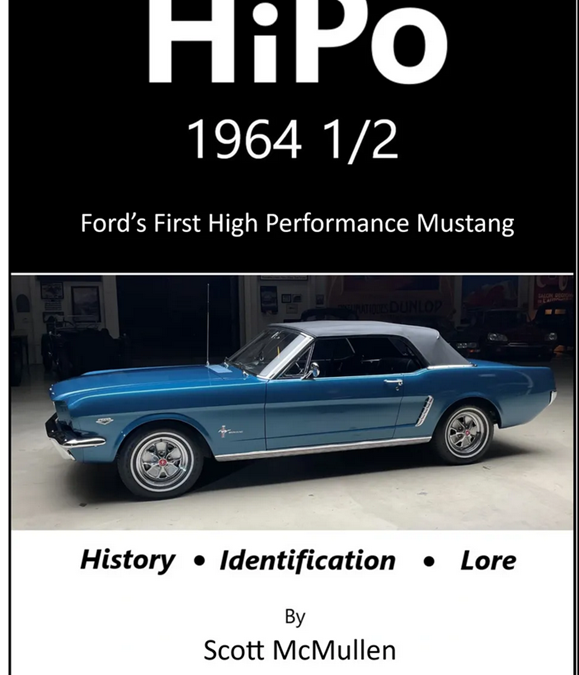
Introducing “HiPo 1964 1/2 Ford’s First High Performance Mustang – History, Identification, Lore”. Dive into the thrilling world of Ford’s iconic 64 1/2 K code Mustang with captivating stories and stunning visuals. A must-have for every auto enthusiast!
The authoritative guide to Ford’s original street legal race-bred Mustang and one of the world’s rarest collector cars, whose fascinating story is sure to entertain a wide range of automotive enthusiasts – not just Mustang fans – covering history, early prototypes, development/testing, production, characteristics/parts, restoration/preservation, and much more. (Hardcover, 347 pages, 157 photos/images both color and black & white.) By Scott McMullen with foreword by Jay Leno.
“HiPo 1964 ½ Ford’s First High Performance Mustang” focuses on one of Ford’s rarest production cars – rarer than the 1965-1966 Shelby GT 350 and the only option for Mustang performance buffs prior to August 1964. Also known as HiPos or K codes, most enthusiasts are aware of the 65-66 models, but little about the 64 ½ HiPo Mustangs, has been available. The 64 ½ cars were the original embodiment of the street legal race-bred Mustang. Their fascinating story is sure to entertain a wide range of automotive enthusiasts – not just Mustang fans.
The book includes rare, and in some cases, never-before-published pictures of early High Performance Mustang prototypes and pre K code mustangs production cars. Included are details of experimentation and production along with in-depth discussions of how research and development progressed through the start of 64 ½ K code production up to the start of 65 production. Also explored is the lore of these classic muscle cars and the test drivers, like Dan Gurney, who helped wring them out.
This information is invaluable to the collector and automotive performance enthusiast alike. Even the most knowledgeable Mustang aficionado will find new information, some of which will challenge old notions and lore that has been told through generations of Mustang fans the world over. The book goes on to present tips for preserving and restoring a 64 ½ HiPo Mustang. It further delves into characteristics of an authentic 64 ½ K code Mustang along with how they changed through the few weeks in 1964 that these ultra rare cars were produced.
Hardcover, 347 pages, 157 photos/images both color and black&white.

• Star photographer René Staud provides the ultimate proof: Black is beautiful
• From the legendary Alfa Romeo 8C from the 1930s, to the Bugatti Veyron Grand Sport Vitesse, the fastest open-top series sports car
• With exciting texts by Jürgen Lewandowski and contributions by Andrea Zagato (CEO Zagato), the head of design at Mercedes, Gorden Wagener and design critic Stephen Bayley
René Staud, the grand master of automobile photography, has published a new illustrated book. In his coffee-table book Black Beauties, the automotive photographer devotes himself entirely to the color black. In this extraordinarily book, Staud takes car lovers on a journey through time and presents the top models of the world’s greatest sports car brands. From the legendary Alfa Romeo 8C from the 1930s, to the declared goddess Citroën DS, to the fastest open-top series sports car, the Bugatti Veyron Grand Sport Vitesse, the star photographer demonstrates the aesthetics that the color black lends a car. Staud’s photographs are characterized by his trademark striking style and uniquely showcase the classic elegance and sporting potency of the vehicles. But this impressive coffee table book does not only inspire with its great photos. The texts are by Jürgen Lewandowski, a luminary in automotive journalism and author of over 90 books on the subject. In addition, comments by Andrea Zagato (CEO Zagato), Gorden Wagener (head of design Mercedes) and Stephen Bayley (journalist and design critic) are included to provide the reader with specific insider knowledge from the industry. Text in English and German.

Ready for a trip to the “end of the world”? Patagonia stands for infinite and awe-inspiring landscapes, glistening glaciers and majestic peaks. Exclusively for the CURVES magazine, photographer Stefan Bogner explored the most beautiful scenic roads of this unique area.
Marvellous aerial views show exciting routes right in the middle of nowhere. No matter whether you’re driving casually through the wild steppe in your caravan or prefer the thrills of winding roads with breathtaking views: The extraordinary nature experience makes your trip most certainly an unforgettable journey.
– Patagonia: Pictures of an overwhelming landscape you have never seen like this before
– The loveliest routes and loneliest mountain roads: with maps for route planning
– Unique driving experience on endless roads: for tours by car, motorbike, and caravaning
– Exquisite recommendations: Patagonia‘s best hotels and sights
– CURVES – the passion for lovely curves: an exceptional mix of travelogue and illustrated book
Delightful driving on the world’s most beautiful roads: Patagonia for individualists. Mountain passes with a view, matchless mountain panoramas and vast untouched plateaus: the characteristic landscape at the south end of Chile and Argentina is full of highlights. “Soulful Driving” is Stefan Bogners‘ motto for leisurely road trips, where you set the pace. To top this off, he recommends comfortable accommodation, fine restaurants and sights worth seeing.
Enjoy the airflow and find out where armadillos and guanacos bid good night: With CURVES Patagonia you will explore and fall in love with scenic roads and find the best tips for tours on two or four wheels.
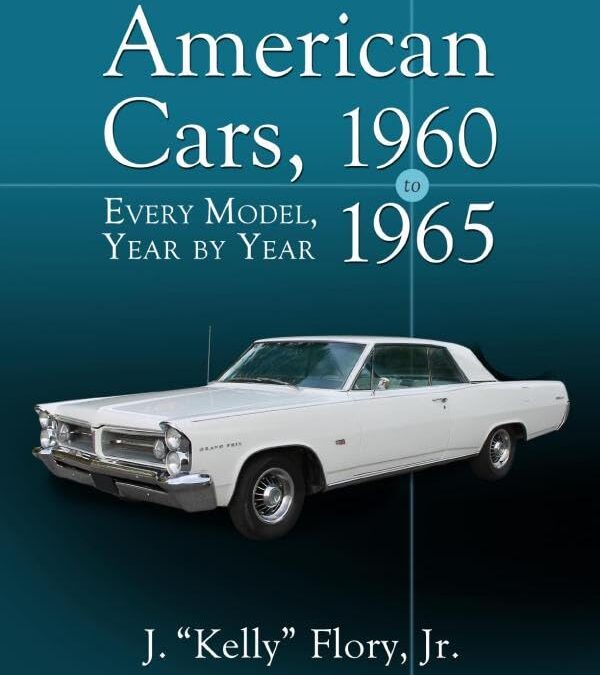

Contrary to popular belief, ‘Fluxie’ did not enter the world on full opposite-lock, nor did he have a cigarette in one hand and a pint in the other. Destined to race, he never got the biggest breaks but he did become one of motorsport’s most colourful and best-loved characters, someone who has always lived life to the full.
Ian Flux’s autobiography tells it how it was, covering not only the highs — including five championship titles — but also the many setbacks. Along the way we laugh with him about much of it, particularly the pranks, but also learn about some dark times that he has never previously divulged.
- Early days: growing up on a farm, first kart aged 6, muddling through in the classroom, lots of laughs — but also sexual abuse from a schoolmaster and an early racing mentor.
- The spark ignites: starting to race in 1970 with a Formula 6 kart, then onwards to Formula Vee; brushing shoulders with Formula 1 working for the Token and Graham Hill teams.
- Grabbing the chances: a Formula Vee title in 1975 leads to Formula 3 and Formula Atlantic, but still with various jobs to make ends meet, including as mechanic to motorcycle racing legend Giacomo Agostini for his four-wheel efforts.
- Diversifying into sports cars: successful adventures in Sports 2000 and Thundersports, winning championships in both, plus Thundersaloons.
- A true all-rounder: going into the British Touring Car Championship from 1988 in a wide range of tin-tops; racing a Jaguar XJR-15 in the big-money 1991 series held at Grand Prix races, including Monaco.
- Championship double in 1996: the ‘golden year’ in the TVR Tuscan Challenge and the British GT Championship, the latter with a McLaren F1 GTR.
- So much else: racing on into recent times, notching up nearly 50 years on track; testing competition cars for Motorsport News; driver tuition and track-day demonstrations.
This is a very different kind of racing driver’s memoir, with lots of laughs along the way together with searing personal honesty.

Bunker Hill is the highest point of downtown Los Angeles, both literally and figuratively. Its circle of life has created a continuous saga of change, each chapter rich with captivating characters, structures, and culture. In Bunker Hill Los Angeles: Essence of Sunshine and Noir, historian Nathan Marsak tells the story of the Hill, from the district’s inception in the mid-19th century to its present day. Once home to wealthy Angelenos living in LA’s “first suburb,” then the epicenter of the city’s shifting demographics and the shadow and vice of an urban underbelly, Bunker Hill survived its attempted erasure and burgeoned as a hub of arts, politics, business, and tourism.
As compelling as the story of the destruction of Bunker Hill is―with all the good intentions and bad results endemic to city politics―it was its people who made the Hill at once desirable and undesirable. Marsak commemorates the poets and writers, artists and activists, little guys and big guys, and of course, the many architects who built and rebuilt the community on the Hill―time after historic time.
Any fan of American architecture will treasure Marsak’s analysis of buildings that have crowned the Hill: the exuberance of Victorian shingle and spindlework, from Mission to Modern, from Queen Anne to Frank Gehry, Bunker Hill has been home to it all, the ever-changing built environment.
With more than 250 photographs―many in color―as well as maps and vintage ephemera to tell his dramatic visual story, Marsak lures us into Bunker Hill Los Angeles and shares its lost world, then guides us to its new one.

Understand the “magic” of how optimized camshafts extract the most performance from every engine component, eliminating valvetrain guesswork.
Camshafts are the coach and conductor of any four-stroke engine from early flatheads to modern Formula 1. Performance engines are amazingly sensitive to how and when the valves to the combustion chamber open and close. The valvetrain configuration and flow characteristics may change significantly between applications, but the fundamental principles are universal. This allows the language, setup, dynamics, energy, and pressure aspects of a valvetrain to be covered in a way that is just as useful for optimizing a sub-15-hp go-kart engine as it is on a 500-plus-hp street engine or modern 1,500-plus-hp NHRA Pro Stock engine.
In High-Performance Cams and Valvetrains: Theory, Technology, and Selection, farm-kid-turned-physicist Billy Godbold combines his quarter-century of experience with valvetrains at Comp Cams, Lunati, Crane Cams, and Edelbrock with the techniques he uses with professional teams in NASCAR, the NHRA, road racing, dirt-track racing, offshore racing, and land speed racing. He guides you to think about any valvetrain system with his perspective. Often lighthearted and filled with analogies, this book endeavors to make complex concepts easy to understand without watering down important details.
Specific configurations and applications are covered, providing techniques and examples for optimizing camshafts and the valvetrain around intakes, headers, superchargers, turbochargers, fuels, carburetors, and modern EFI applications. If you are planning or building a performance engine, or if you just want to know the science behind how cams and valvetrains work, this book is an indispensable resource.



